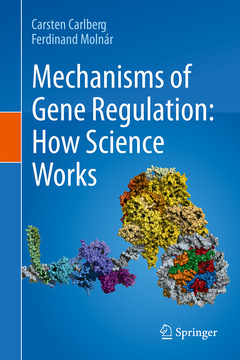Mechanisms of Gene Regulation: How Science Works, 1st ed. 2020

Carsten Carlberg graduated 1989 with a PhD in biochemistry at the Free University Berlin (Germany). After positions as postdoc at Roche (Basel, Switzerland), group leader at the University of Geneva (Switzerland) and docent at the University of Düsseldorf (Germany) he is since 2000 full professor of biochemistry at the University of Eastern Finland in Kuopio (Finland). His work focuses on mechanisms of gene regulation by nuclear hormones, in particular on vitamin D. At present Prof. Carlberg focuses projects on epigenome-wide effects of vitamin D on the human immune system.
Ferdinand Molnár received his PhD in biochemistry from the University of Kuopio (Kuopio, Finland) in 2006. He did his postdoctoral training in Structural Biology at the IGBMC (Illkirch, France). In 2008 he joined the School of Pharmacy at the University of Eastern Finland (Kuopio, Finland) studying nuclear receptor-ligand, - protein and -DNA interactions. In 2018 he moved to the Nazarbayev University (Nur-Sultan, Kazakhstan) where he holds an Associate Professor position at the Department of Biology. Prof. Molnár interests are integrative structural biology and bioinformatics, eukaryotic transcriptional regulation in health and disease and recombinant protein production.
Includes a high figure to text ratio to improve learning
Based of 18 years teaching experience on the topic
Provides in a condensed form an overview on the present understanding of the mechanisms of gene regulation
Date de parution : 10-2020
Ouvrage de 149 p.
15.5x23.5 cm
Thème de Mechanisms of Gene Regulation: How Science Works :
Mots-clés :
Transcription factor; Chromatin; RNA; Transcription; Epigenome; Histone modification; DNA methylation



